A JOURNEY TO SANTIAGO - SAINT JACQUES DE COMPOSTELLE A PILGRIM’S PROGRESS
Lynne Burney Yashoda
Part 3 - Espagne 2002 - Anglais / Français (version française plus bas)
This story begins just before Easter in the year 2000. It spans 4 years and 3 seasons. As I tell the story I will pause to ask you, the reader or listener, a question which you may choose to answer or share it with others.
You will notice that I refer to this journey alternatively as le chemin de Saint Jacques, the Way of Saint James, El Camino or sometimes just as Compostella.
Episode 17 : A String of Spanish Towns
From Larrasoana to Pamplona; to Puente la Reina; to Estrella; to Los Arcos; to Viana; to Logrono - Navarrete; to Najera; to Santo Domingo de la Calzada; to Belorado; to Burgos
Each town had its own history. Each hostel told a similar story. Each day was unique. We passed through Rioja vineyards lush with ripening grapes. We walked into chapels, churches and cathedrals; each bespoke the Spanish flavor of the Bible. Seen from my Protestant Methodist roots in New Zealand the interiors looked like gaudy displays of blood and guts; agony and dire woe and all in lurid colors. The founding stories of these buildings, when I could understand the language that described them, held my attention but didn’t capture my heart. There was little attempt in most places to cater to a non-Spanish speaking public so I was left to my ragged memories of Spanish history and my fondness for the stories of Jesus.
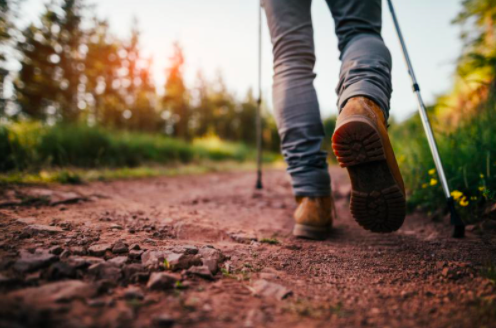 Walking the Way in Spain that first year often felt like we were walking our own Via Dolorosa: the path frequently ran alongside the main road; it took us through the inevitable industrial wasteland on the outskirts of every major town; it made no attempt to paint pretty pictures of itself for a tourist brochure. I constantly had the impression we were walking between the past and the present; tracing a line between the time of the Knights of the ancient Order of Saint John and the motorways of the 20th century. We wore 20th century Gortex on our backs and carried slim light weight, warm sleeping bags rolled up inside backpacks with padded backs and thick shoulder protecting straps. Our toiletries were squeezed into neatly designed plastic containers that could be refilled and safely carried on board a plane if necessary. We walked into villages built of stone walls going back to the middle- ages. We walked along highways with trucks thundering along on our left side and insects going about their business in amongst the wild flowers bordering fields of ripened crops on our rights side. Cars whooshed and birds chirped and we walked between. As pilgrims of the present, we followed the most accessible and safest routes traced by pilgrims of the past. Road builders in the 20th century had followed the same routes for the same reasons: safety and accessibility so we, the pilgrims of the present found ourselves with a choice as to where to direct our gaze: golden wheat fields or the slick lines of tar-sealed roads. Our ears had no choice: sometimes the cacophony of people rushing along highways in their trucks and cars was overwhelming. It had been different in France. Attention had been paid to aligning the path with major walking routes while still respecting the ancient passageways of the Camino. Or rather, modern walkways had been traced with respect to the ancient path of pilgrims going to Santiago. Whichever way it was, it meant we had been spoilt in France with nature’s beauty without the noise of the 20th century. We were able to benefit from the convenience of travel in the 20th century to get to the places where we could pretend, if we wanted to, to be pilgrims from the past. Spain offered no such pretense.
Walking the Way in Spain that first year often felt like we were walking our own Via Dolorosa: the path frequently ran alongside the main road; it took us through the inevitable industrial wasteland on the outskirts of every major town; it made no attempt to paint pretty pictures of itself for a tourist brochure. I constantly had the impression we were walking between the past and the present; tracing a line between the time of the Knights of the ancient Order of Saint John and the motorways of the 20th century. We wore 20th century Gortex on our backs and carried slim light weight, warm sleeping bags rolled up inside backpacks with padded backs and thick shoulder protecting straps. Our toiletries were squeezed into neatly designed plastic containers that could be refilled and safely carried on board a plane if necessary. We walked into villages built of stone walls going back to the middle- ages. We walked along highways with trucks thundering along on our left side and insects going about their business in amongst the wild flowers bordering fields of ripened crops on our rights side. Cars whooshed and birds chirped and we walked between. As pilgrims of the present, we followed the most accessible and safest routes traced by pilgrims of the past. Road builders in the 20th century had followed the same routes for the same reasons: safety and accessibility so we, the pilgrims of the present found ourselves with a choice as to where to direct our gaze: golden wheat fields or the slick lines of tar-sealed roads. Our ears had no choice: sometimes the cacophony of people rushing along highways in their trucks and cars was overwhelming. It had been different in France. Attention had been paid to aligning the path with major walking routes while still respecting the ancient passageways of the Camino. Or rather, modern walkways had been traced with respect to the ancient path of pilgrims going to Santiago. Whichever way it was, it meant we had been spoilt in France with nature’s beauty without the noise of the 20th century. We were able to benefit from the convenience of travel in the 20th century to get to the places where we could pretend, if we wanted to, to be pilgrims from the past. Spain offered no such pretense.
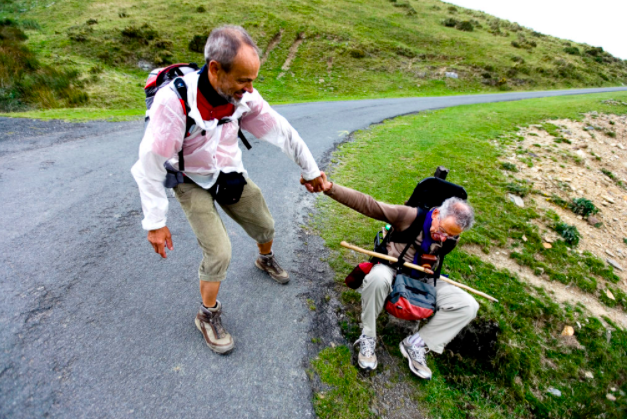 The modern Spanish pilgrim was mostly young, travelled in packs, only spoke Spanish and only loudly. At least they did in the hostels that we stayed in. The Spanish contrasted dramatically in their attire with other European pilgrims. They looked like they took the suffering of Christ literally. Their cross and crown of thorns manifested in their blisters from wearing cheap sandshoes and thin socks; their back pains from carrying oversized backpacks necessary for containing their overweight sleeping bags. I never found out if the suffering was part of the “fun” of walking the Camino with friends and family; whether it was an integral part of a pilgrimage, Spanish style, or whether they plain could not afford better equipment. I never found out because I couldn’t ask them. I didn’t speak Spanish. It was a rare experience to be in a country where so few people spoke English. It had been like that in France when I first arrived back in 1978. The French were so proud of their language that they forgave anyone making an
The modern Spanish pilgrim was mostly young, travelled in packs, only spoke Spanish and only loudly. At least they did in the hostels that we stayed in. The Spanish contrasted dramatically in their attire with other European pilgrims. They looked like they took the suffering of Christ literally. Their cross and crown of thorns manifested in their blisters from wearing cheap sandshoes and thin socks; their back pains from carrying oversized backpacks necessary for containing their overweight sleeping bags. I never found out if the suffering was part of the “fun” of walking the Camino with friends and family; whether it was an integral part of a pilgrimage, Spanish style, or whether they plain could not afford better equipment. I never found out because I couldn’t ask them. I didn’t speak Spanish. It was a rare experience to be in a country where so few people spoke English. It had been like that in France when I first arrived back in 1978. The French were so proud of their language that they forgave anyone making an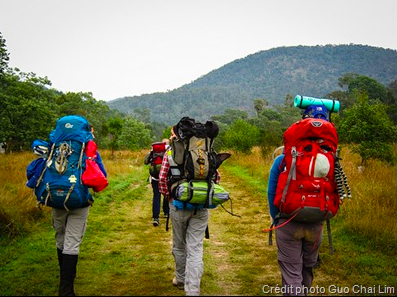 attempt to speak their language but they were unforgiving of anyone who made the assumption that the world spoke English. Increasing the volume of one’s speech in English on the grounds that any French person would therefore understand did NOT work. I learnt quickly that a few words of French were worth a thousand words of English. But the French became international travelers and conversing in English became part of the game so they no longer looked down their long gallic noses in distain at anyone daring to address them in English on their native soil. I got the impression that northern Spain was linguistically where France had been 20 years previously: proudly monolingual with no intention of changing that. But I really didn’t know if it was an economic issue or a real choice and being a proud race of people would they have ever told me they were too poor to travel anywhere else or in any other way?
attempt to speak their language but they were unforgiving of anyone who made the assumption that the world spoke English. Increasing the volume of one’s speech in English on the grounds that any French person would therefore understand did NOT work. I learnt quickly that a few words of French were worth a thousand words of English. But the French became international travelers and conversing in English became part of the game so they no longer looked down their long gallic noses in distain at anyone daring to address them in English on their native soil. I got the impression that northern Spain was linguistically where France had been 20 years previously: proudly monolingual with no intention of changing that. But I really didn’t know if it was an economic issue or a real choice and being a proud race of people would they have ever told me they were too poor to travel anywhere else or in any other way?
I was just passing through and did not feel like making an effort so I remained largely ignorant of the facts behind what I could observe of the boisterous young Spaniards filling the hostels with their chatter and their ill adapted equipment.
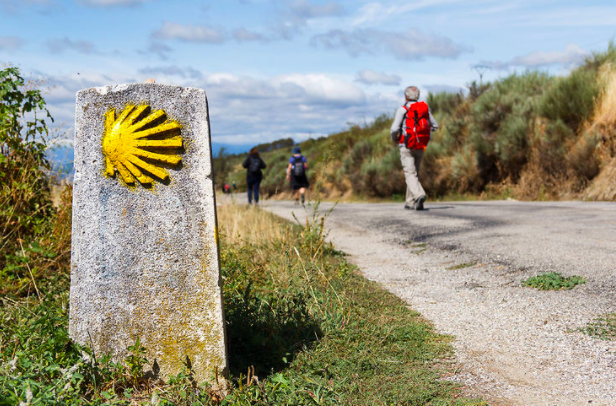
For a large number, the adventure of the Camino started only in Sarria, the town situated 100 kilometers from Santiago. The “rules” of pilgrimage stipulate that in order to qualify for your Compostela certificate you must have proof of having covered at least 100 kilometres on foot. Sarria was the land mark departure point for many who tumbled out of taxis and hoisted their “crosses” on to their backs from there.
That first year in Spain we sometimes gave ourselves a “holiday” by booking into a small hotel for the night rather than condemn ourselves to another night of prudent promiscuity in an auberge espagnole. I found that my levels of tolerance and forbearance severely challenged after several nights of sharing space with people I couldn’t understand and whose customs and age didn’t match my own. I felt guilty about this every now and again but not enough to forgo the quiet luxury of a private bathroom and a good night’s sleep.
Questions :
Have you ever shared living space with people very different from you?
What were the biggest challenges?
While the contours of each day and night remain fuzzy some of the memories of that period are razor sharp: startlingly blue nylon curtains on bedroom windows of a small hotel in the center of the town, Los Arcos. Their deep blue was so beautiful and a breeze moved them so gently that my eyes were lulled into a sleep that was a salve to the weariness in my bones.
I remember that night too because we were up before first light the following morning. I was in the bar downstairs, filling the thermos and sipping a hot chocolate when my ears picked up the tune playing on the radio behind the bar. It was Donovan singing one of my all-time favorite songs about love being as hard to catch as the wind. I started humming along, picking up the refrain and feeling more and more wistful with each verse. The words were transporting me back to a time when I was young, in love and living in an insouciant world far away in New Zealand. I felt lonely, before dawn, in a bar with strangers. Tears gathered. The lyrics caught in my throat. Nostalgia threatened to suck my legs dry and leave me stuck on a bar stool in Spain.
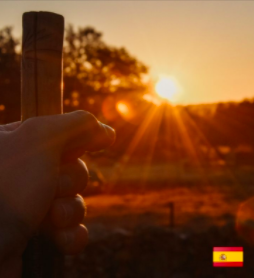
The song ended. The sun rose. We left the bar. We started walking. Memory followed: blue curtains catchin’ the wind; words catchin’ my throat; you, so long ago catchin’ my heart.
Question :
Is there a particular song that takes you back to a world that was and makes you feel happy and sad at the same time?
Episode 17 : Un chapelet de villes… espagnoles
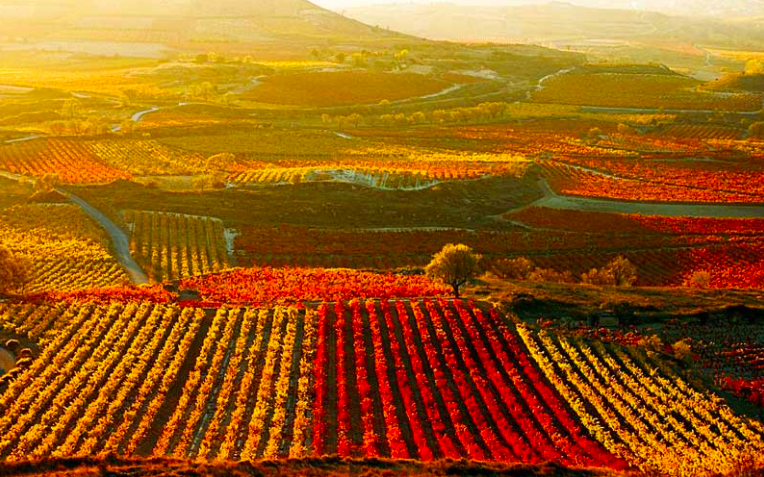
De Larrasoana à Pampelune, de Puente la Reina à Estrella puis Los Arcos et Viana; suivis de Logrono, Navarrete, Najera en passant par Sancto Domingo de la Calzada ou encore Belorado et Burgos
A chaque ville sa propre histoire et à chaque auberge une histoire similaire. Chaque jour était unique. Nous sommes passés par les vignobles de la Rioja luxuriants avec leurs raisins mûrs. Entrés dans les chapelles, les églises et les cathédrales, chacune reflétant à sa façon sa saveur espagnole de la Bible. Vus de mes racines méthodistes protestantes en Nouvelle-Zélande, les intérieurs ressemblaient à des démonstrations voyantes de sang et de chaires, d’agonie et terribles malheurs le tout dans des couleurs lugubres. Les histoires fondatrices de ces bâtiments, bien que merveilleuses, ne m’ont pas touché.
Marcher sur le Chemin en Espagne lors de cette première année a souvent donné l’impression que nous cheminions sur notre propre Via Dolorosa: le Camino courant souvent le long de la route principale, nous emmenant à travers les inévitables friches industrielles de la périphérie de chaque grande ville et ne faisant aucune tentative pour peindre de lui-même de jolies images de sa route telle qu’une brochure touristique l’aurait fait.
Je garde le souvenir de camions rugissant le long d’une autoroute sur mon côté gauche comme sur mon côté droit, je regarde les insectes occupés à leurs affaires dans les fleurs sauvages bordant les champs mûres de cultures. Des voitures qui foncent. Les oiseaux qui gazouillent. Et moi qui m’intercale entre les deux ;
Les pèlerins du passé choisissaient les itinéraires les plus accessibles et les plus sûrs pour se rendre à Santiago, il était donc logique que, des centaines d’années plus tard, les constructeurs de routes suivent les mêmes parcours .
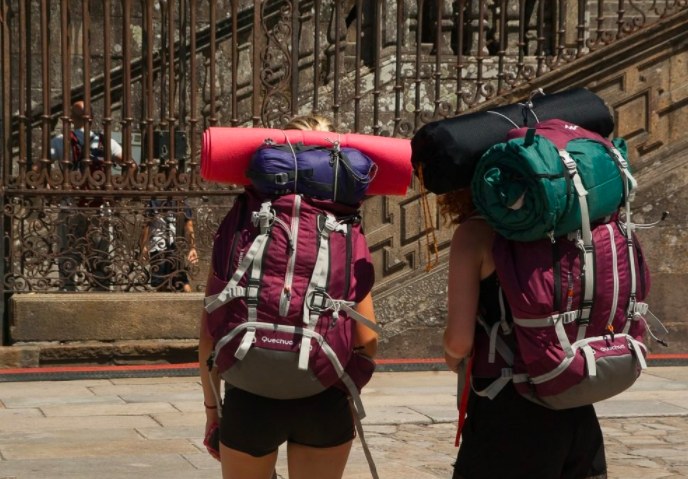 Le pèlerin espagnol moderne était pour l’essentiel jeune, voyageant en meute, ne parlant qu’espagnol et seulement haut et fort. Du moins, le faisaient-ils dans les auberges où nous avons séjourné. Ils contrastaient considérablement dans leur tenue avec les autres pèlerins européens. Ils avaient l’air d’avoir à porter – littéralement- la souffrance du Christ. Leur croix et leur couronne d’épines se manifestaient à travers leurs ampoules, leurs chaussures de sport bon marché, de légères chaussettes de tennis. Ou encore par leur mal de dos à porter des sacs surdimensionnés mais nécessaires pour contenir leur couchage en surpoids. Je n’ai jamais su si la souffrance faisait partie du «jeu» de marcher le Camino avec des amis et de la famille ou si elle faisait partie intégrante d’un pèlerinage de style espagnol. Ou encore s’ils ne pouvaient pas – mais pas du tout - se permettre de dépenser pour un meilleur équipement.
Le pèlerin espagnol moderne était pour l’essentiel jeune, voyageant en meute, ne parlant qu’espagnol et seulement haut et fort. Du moins, le faisaient-ils dans les auberges où nous avons séjourné. Ils contrastaient considérablement dans leur tenue avec les autres pèlerins européens. Ils avaient l’air d’avoir à porter – littéralement- la souffrance du Christ. Leur croix et leur couronne d’épines se manifestaient à travers leurs ampoules, leurs chaussures de sport bon marché, de légères chaussettes de tennis. Ou encore par leur mal de dos à porter des sacs surdimensionnés mais nécessaires pour contenir leur couchage en surpoids. Je n’ai jamais su si la souffrance faisait partie du «jeu» de marcher le Camino avec des amis et de la famille ou si elle faisait partie intégrante d’un pèlerinage de style espagnol. Ou encore s’ils ne pouvaient pas – mais pas du tout - se permettre de dépenser pour un meilleur équipement.
Pour un grand nombre, l’aventure du Camino ne commence qu’à Sarria, la ville située à 100 kilomètres de Santiago. Les « règles » du pèlerinage stipulant que pour être admissible au certificat de la Compostella, vous devez apporter la preuve d’avoir parcouru au moins 100 kilomètres à pied. Sarria est le point de départ, le marqueur terrestre pour beaucoup de ceux qui descendent de leur taxis, leurs croix sur le dos, et se mettent en route à partir de là.
Cette première année en Espagne, nous nous sommes parfois autoriser des « vacances » en réservant un petit hôtel pour la nuit plutôt que de nous condamner à une autre nuit de relative promiscuité dans une auberge espagnole.
Parfois, j’avais honte de mon manque de tolérance et d’indulgence. Chez moi ont dit parfois que « certaines noix sont plus difficiles à fendre que d’autres.

Question:
Avez-vous des noix difficiles à craquer ?

Alors que les contours de chaque jour et chaque nuit restent flous, certains souvenirs de cette période demeurent vivaces. Pour une raison dont je n’ai pas retenu la cause, je me souviens clairement de ces rideaux de nylon étonnamment bleu sur les fenêtres de la chambre d’un petit hôtel dans le centre de la ville de Los Arcos. Leur bleu intense, profond, était si beau que mes yeux bercés par le vent qui les agitait, devenaient lourd sommeil. Le tout agissant tel un baume apaisant chassant la lassitude ressentie dans tous mes os.

Je me souviens aussi de cette nuit ou nous nous étions levés avant la première lumière du matin. J’étais dans le bar, en bas, remplissant le thermos et sirotant un chocolat chaud quand mes oreilles ont reconnu un air sur la radio derrière le bar. C’était Donovan avec une de mes chansons favorite du temps jadis. J’ai commencé à fredonner reprenant le refrain sur l’amour aussi difficile à saisir que le vent et mon âme s’est senti submergée par la nostalgie d’une époque, quand j’étais jeune, amoureuse et que le monde était différent, insouciant. Je me sentais seule, avant l’aube, dans un bar avec des inconnus. Les larmes montaient et j’avais une boule dans la gorge. La mélancolie menaçaient de saper l’énergie de mes jambes, m’abandonnant sur un tabouret de bar quelque part en Espagne .
La chanson s’est terminé. Le soleil s’est levé. On a quitté le bar.
On a commencé à marcher.
La mémoire est restée : rideaux bleus attrapés par le vent.

Question
Y a-t-il une chanson particulière qui vous ramène à un monde qui était et vous fait vous sentir heureux et triste en même temps?



